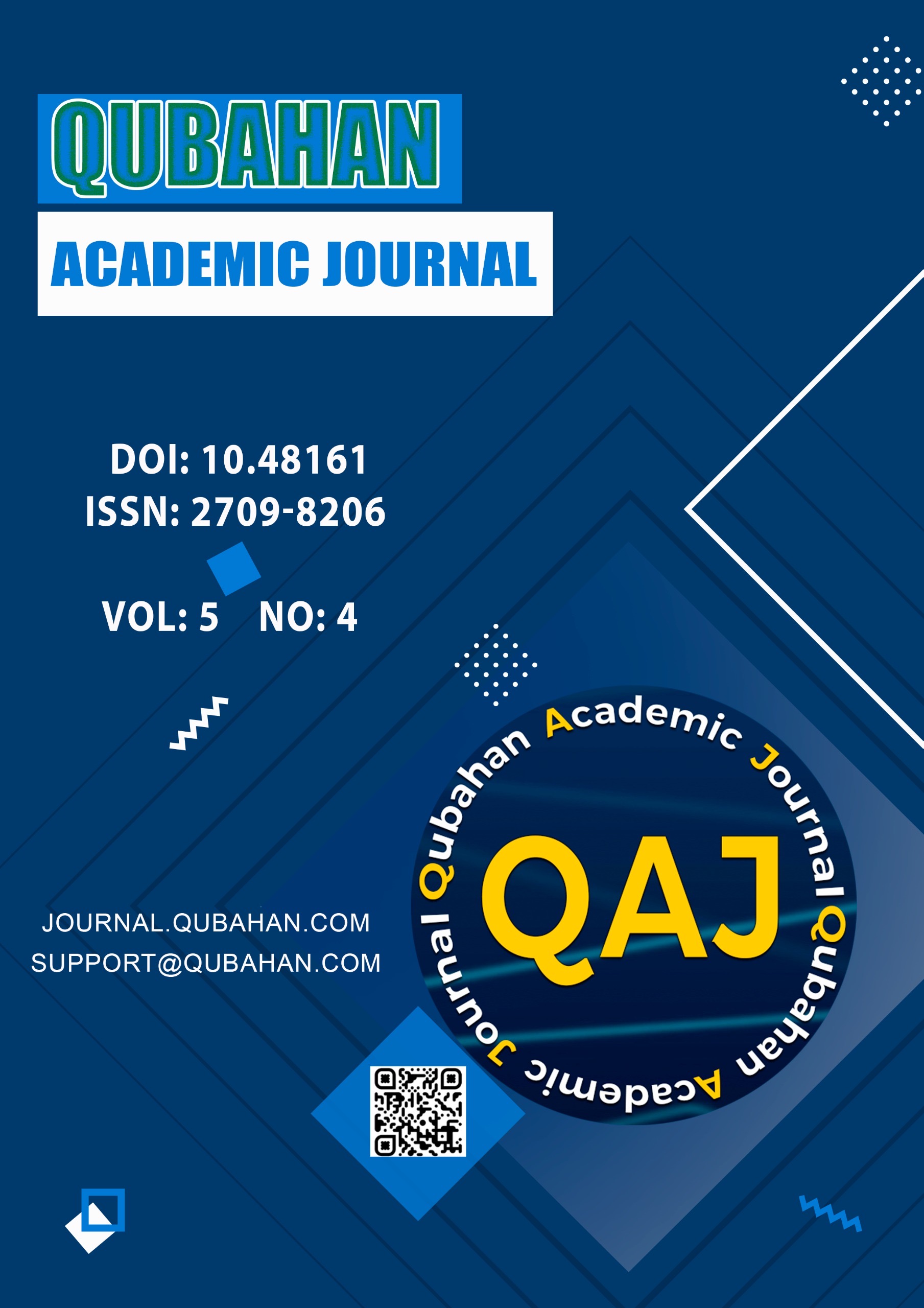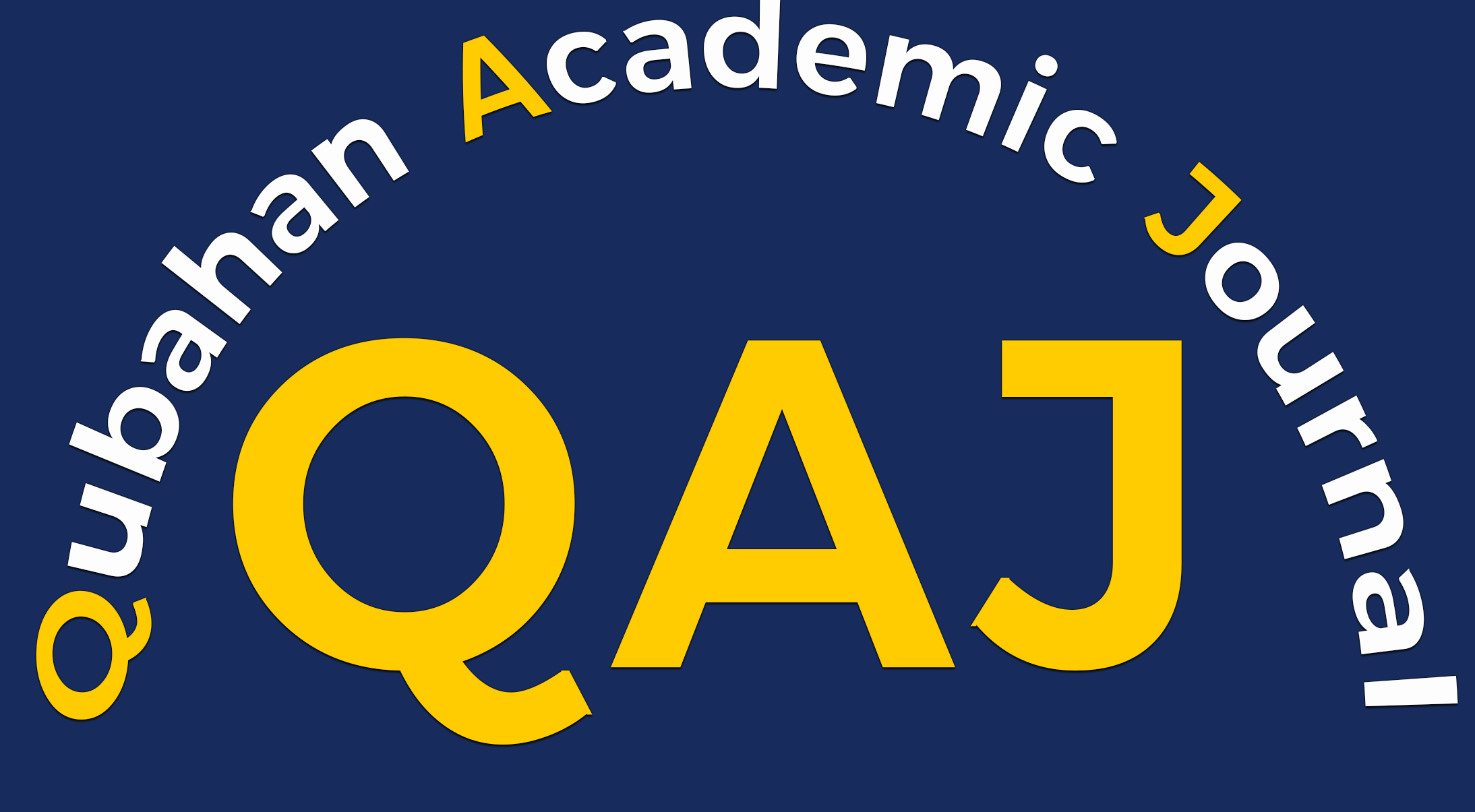Harnessing Artificial Intelligence to Advance Art Education Goals: A Study from Kuwait
DOI:
https://doi.org/10.48161/qaj.v5n4a1831Keywords:
artificial intelligence, art education, educational goals, teaching innovation, Kuwait.Abstract
This research examined the role of artificial intelligence (AI) applications in realizing the objectives of art education in Kuwait. A descriptive research method was adopted to gather, summarize, and interpret data for the purpose of providing clarifications and the participants’ insights. There were 117 participants who were public education teachers, and the questionnaire was used as the main research instrument. To analyse data, the descriptive statistics (means, standard deviations, frequencies and percentage) and inferential statistics (t-tests and ANOVA) were employed to quantify perceptions of teachers and group differences. The research findings specifically underscored that AI applications are instrumental in producing an overall positive impact for several of the key objectives for art education such as identifying art history, developing artistic communication, facilitating critical viewing and analysis of artworks, stimulating artistic production, and constructing national identity and national belonging is greatly enhanced. This study found that AI’s effect on appreciation of art was moderate. The findings showed minor differences in responses between male and female teachers, with differences found to be statistically significant based on education qualification level used in describing/quantifying responses, but importantly differences expressed in responses suggest differences among those teachers with postgraduate degrees, AI training, or education experience at a higher level. The research suggested that the use of more artificial intelligence in art education would help students better appreciate art and the beauty of nature through realistic simulations, connecting the artificial tools of the digital world with the creativity of nature.
Downloads
References
General Directorate for Art Education. (2023). Comprehensive memorandum for art education (Part 1). Ministry of Education.
Abou Karroum, S., & Elshaiekh, N. E. (2024). Exploring the Role of Artificial Intelligence on Educational Dynamics: Evaluating its Impact on Pedagogical Practices and Student Learning Outcomes. Qubahan Academic Journal, 4(4), 318-329.
Jones, M., & Smith, K. (2023). Enhancing art education through virtual reality: A case study. Journal of Visual Arts Education, 41(2), 78-92.
Rukhsar, S., Awan, M. J., Naseem, U., Zebari, D. A., Mohammed, M. A., Albahar, M. A., ... & Mahmoud, A. (2023). Artificial intelligence based sentence level sentiment analysis of COVID-19. Computer Systems Science and Engineering, 47(1), 791-807.
MuFan, K. (2023). Applications and challenges of artificial intelligence in the future of art education. Pacific International Journal, 6(3), 61-65.
Erişti, S. D. B., & Freedman, K. (2024). Integrating digital technologies and AI in art education: Pedagogical competencies and the evolution of digital visual culture. Participatory Educational Research (PER), 11, 57-79.
Al Braiki, B., Harous, S., Zaki, N., & Alnajjar, F. (2020). Artificial intelligence in education and assessment methods. Bulletin of Electrical Engineering and Informatics, 9(5), 1998-2007.
He, C., & Sun, B. (2021). Application of Artificial Intelligence Technology in Computer Aided Art Teaching. *Computer-Aided Design and Applications, 18*(S4), 118-129.
Ali, N. A. A. (2024). The Attitudes of Art Education Teachers towards the use of AI in Teaching Visual Arts at General Education Stages in the Kingdom of Saudi Arabia. Journal of Ecohumanism, 3(8), 13441-13459.
How, M.-L., & Hung, W. L. D. (2019). Educing AI-Thinking in Science, Technology, Engineering, Arts, and Mathematics (STEAM) Education. Education Sciences, 9(3), 184.
Kristiawan, D., Bashar, K., & Pradana, D. A. (2024). Artificial Intelligence in English Language Learning: A Systematic Review of AI Tools, Applications, and Pedagogical Outcomes. The Art of Teaching English as a Foreign Language (TATEFL), 5(2), 207-218.
Yu, H., & Guo, Y. (2023). Generative artificial intelligence empowers educational reform: current status, issues, and prospects. In Frontiers in Education (Vol. 8, p. 1183162). Frontiers Media SA.
Huang, D. (2023). Exploring the impact of artificial intelligence on arts education: Enhancing students' creative potential. Lecture Notes in Educational Psychology and Public Media, 32(1), 152-157.
Miralay, F. (2024). Use of artificial intelligence and augmented reality tools in art education courses. Pegem Journal of Education and Instruction, 14(3), 44-50.
Pavlik, J., & Pavlik, O. (2024). Art education and generative AI: An exploratory study in constructivist learning and visualization automation for the classroom. Creative Education, 15, 601-616.
Wen, Z., Shankar, R., & Antonidoss, A. (2021). Modern art education and teaching based on artificial intelligence. Journal of Interconnection Networks, 22(1), 1-12.
UNESCO Conference. (2020, October 10). Innovative remote education solutions to build back better.
UNESCO Conference. (2022). Innovation and Artificial Intelligence in Education. Jeddah.
Orodho, A. (2004). Elements of educational and social science research method. Kanezja: Maseno, Kenya.
Krejcie, R., & Morgan, D. (1970). Determining sample size for research activities. Educational and Psychological Measurement, 30(3), 607-610.
Wang, Y., & Li-Hua, R. (2006). Marketing competences and strategic flexibility in China. Palgrave Macmillan.
Shenouda, K. A. F. (2023). The role of artificial intelligence applications in teaching art education to intermediate school students. Culture and Development, 23(190), 77-93.
Zachariah, M. R. (2023). The effectiveness of digitization and artificial intelligence applications in art education. Culture and Development, 23(190), 94-110.
Amini, D. (2025). AI in art education: Innovation, ethics, and the future of creativity. Scientific Research Publishing.
Ali, N. A. A. (2024). The attitudes of art education teachers towards the use of AI in teaching visual arts at general education stages in the Kingdom of Saudi Arabia. Journal of Ecohumanism, 3(8), Article 6289.
Abdulmajid, M. A. A. (2025). Enhancing creativity and cultural integration in art education: Evaluating the role of Microsoft Copilot among Kuwaiti design students. Qualitative Education Research Journal, (91), 1-44.
National Art Education Association. (2024). NAEA position statement on use of artificial intelligence (AI) and AI generated qubimagery in visual arts education.
Winey, A. (2024). The benefits & downfalls of AI and art. Grace College Faculty Blog.
Downloads
Published
How to Cite
Issue
Section
License
Copyright (c) 2025 Qubahan Academic Journal

This work is licensed under a Creative Commons Attribution-NonCommercial-NoDerivatives 4.0 International License.











